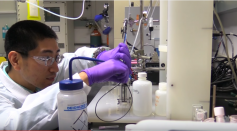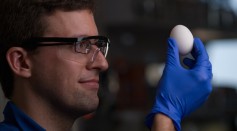chemistry

Fishy Secrets: How Fish Survive Even In Freezing Water

3D Quantum Liquid Crystals: New State Of Matter Discovered To Make Future Ultrafast Quantum Computers Possible

Carbon Dioxide Can Easily Convert Into Industrial Fuel Using Novel Catalyst

Recycling Technique That Makes Cotton-Polyester Into Stronger Fibers May Avoid Clothes Ending In Trash

Cardiac Arrests Can Be Prevented With Drug Repatha; At $1000 Per Injection Every Month Though

Nintendo Switch Cartridges Are Coated With Bitter Chemical To Avoid Ingestion; 1,000 Times More Awful Than Quinine

More People Are Not Aware Of Consuming Flame Retardant Chemicals
Solvent Baths Promise Better Perovskite Crystals and Better Solar Energy
Intricate Organic Molecules—Yeah, We Can 3D Print That
How One Innovation May Change the Solar Energy Game Forever
Intricate Organic Molecules—Yeah, We Can 3D Print That

The Antigastronomist—Unboiling an Egg

VIDEO—Unboiling the Mystery: UC Irvine Researchers Discuss New Discovery of Unboiling Eggs
Most Popular

How Technology Is Changing the Real Estate Industry?

How a Plant-Based Diet Can Protect Against Breast Cancer: Insights from Nutrition Research

Study Reveals High Turnover in Scientific Research Careers: What This Means for Future Scientists

Nikolay Karpenko Biography, Photo, Career, Accomplishments






